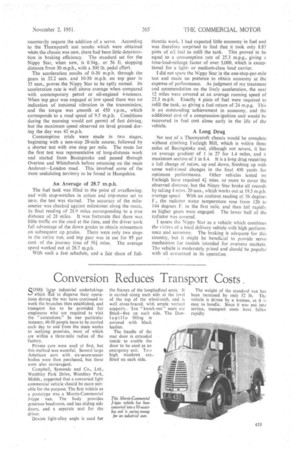Conversion Reduces Transport Costs
Page 49

If you've noticed an error in this article please click here to report it so we can fix it.
SOME large industrial undertakings which had to disperse their operations during the war have continued to work the branches then established, and transport has to be provided for employees who are required to visit the " outstations." In one particular instance, 40-50 people have to be carried each day to and from the main works to outlying premises, most of which are within a three-mile radius of the factory.
Private cars were used at first, but this method was wasteful. Several large Arherican cars with six-seven-seater bodies were then purchased, but these were also extravagant.
Campbell, Symonds and Co., Ltd., Wembley Park Drive, Wembley Park, Middx., suggested that a converted light commercial vehicle should be more suitable for the purpose. The first vehicle as a prototype was a Morris-Commercial 1-type van. The body provides generous headroom, and has sliding side doors, and a separate seat for the driver.
Dcxion light-alloy angle is used for the frames of the longitudinal seats. It is carried along each side at the level of the top of the wheel-arch, and is well cross-braced, with ample vertical supports.. Ten " knock-out " seats are fitted—five on each side. The Dunlopillo filling is covered with black leather.
The handle of the rear door is extended inside to enable the door to be used as an emergency exit. Twa high windows are.. fitted on each side. The weight of the standard van has been increased by only 52 lb. The vehicle is driven by a woman, as it is easy to handle. Since it was put into service, transport costs have fallen rapidly.




























































































